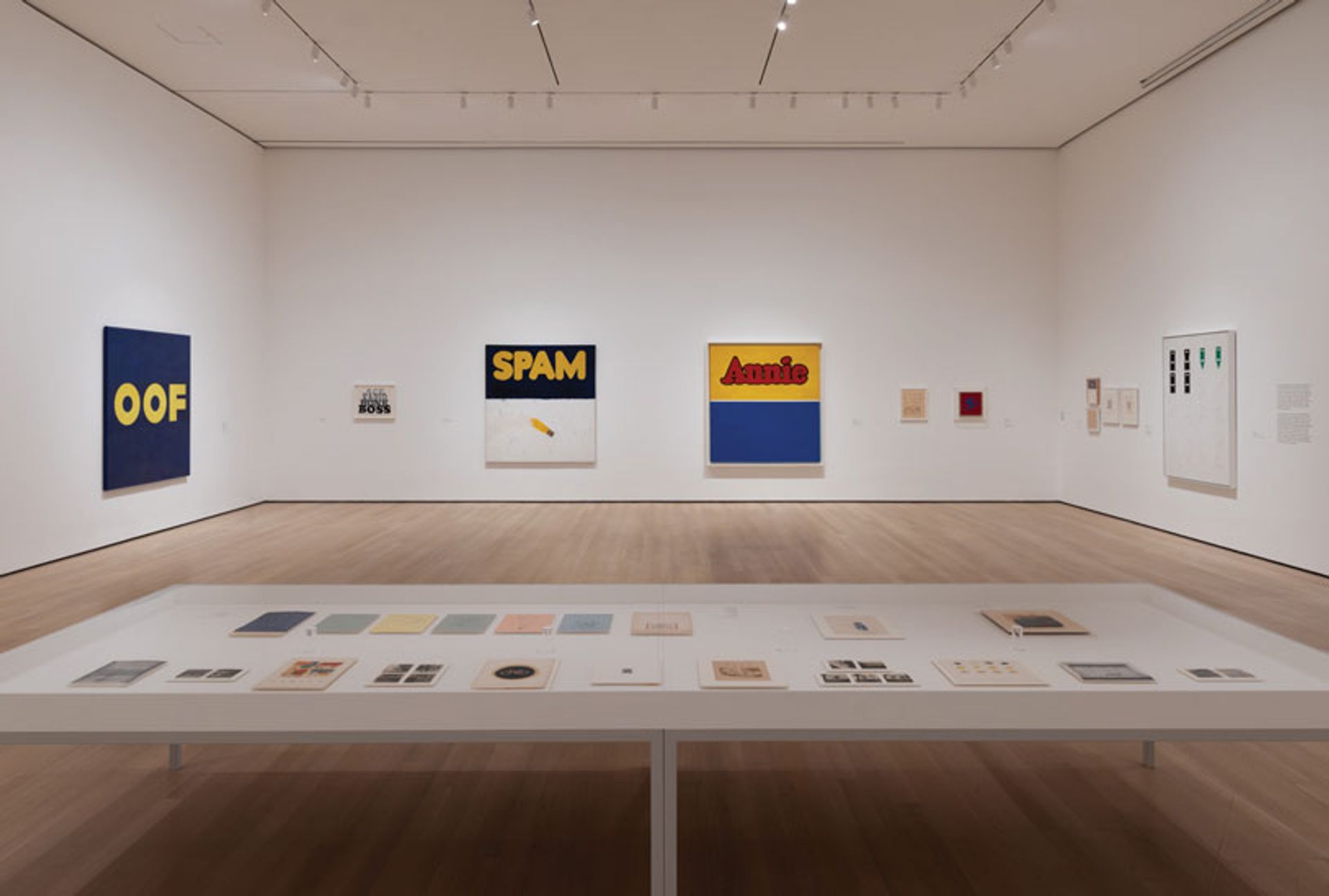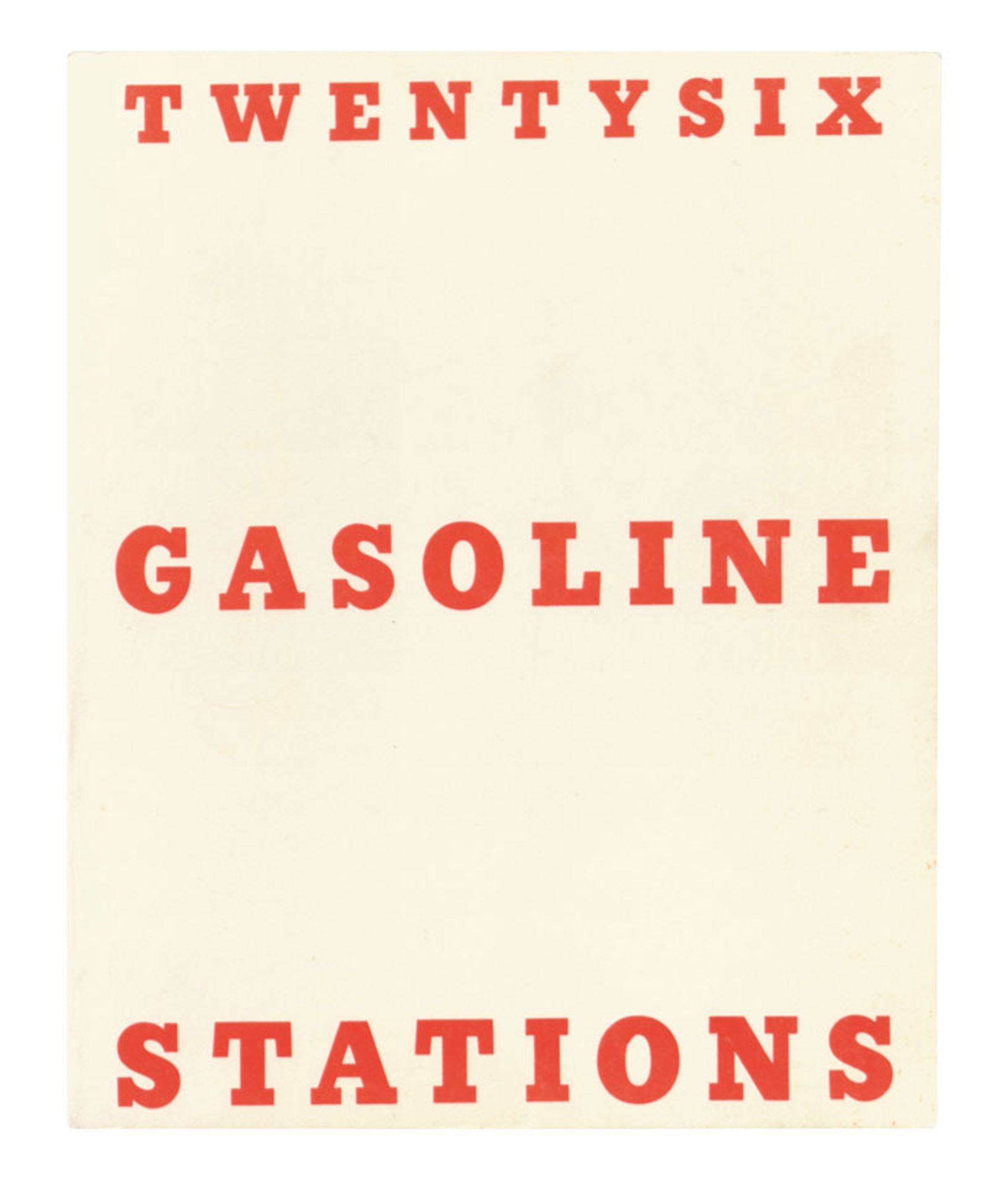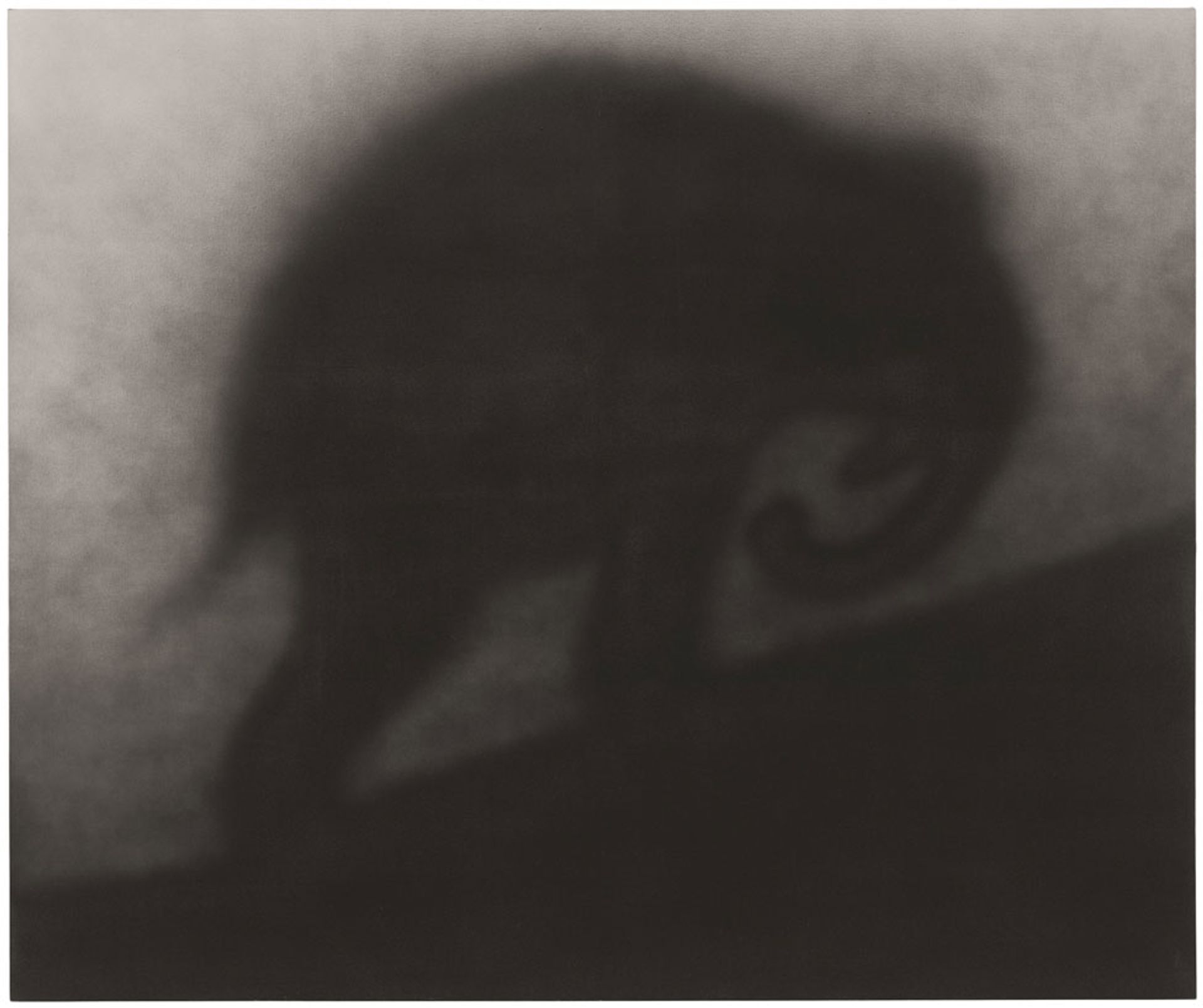Andy Warhol said that Pop art was about “liking things”. Ed Ruscha, the octogenarian Pop conceptualist from Los Angeles, is more specific. He likes “the idea of a word becoming a picture”. Note that Ruscha (pronounced Roo-shay) prioritises the idea of a picture over the word depicted. “Everything possesses irony,” Ruscha says. “Nothing gets away from it.”
That is the ruling principle of representation in Now Then, the artist’s winner of a career retrospective at New York’s Museum of Modern Art (MoMA). Words are all over the show, appearing solo, as explosions of bold-faced, comic-book sounds (OOF, UGH); titles (Annie); puns (News, Mews, Pews, Brews, Stews & Dues); brand names (SPAM); emblems (the Hollywood sign); and fragments of speech. One says: “I don’t want no retrospective”.
Ruscha’s droll sense of humour has a salubrious effect on almost any reading of his art, be it painting, drawing, screenprint, book, photograph or magazine advert. Examples of each keep the eye ping-ponging around a syncopated, mix-and-match presentation by Christophe Cherix, MoMA’s chief curator of drawings and prints, enlivening a museum where contemporary art often looks like an orphaned child. With more than 200 works on display, the exhibition adds up to an evolving canon of “likes”—cars, roads, streetscapes, signage, typography, building façades—that Ruscha has mined in a variety of media and materials during his seven decades as an artist.

An installation view of Now Then, including Ruscha's signature word paintings Oof (1962-63), Actual Size (1962) and Annie (1962) Photo: Jonathan Dorado
The first “scripted” painting to appear in the show, a billboard-size oil from 1962, captures the glamour of a movie premiere in a Klieg-lighted projection of big red letters spelling “20th Century Fox”. Ruscha’s compression of fame, power, hype and time into a single, wide-screen image is characteristic of his ability to send several associations slaloming through the mind at once. The painting also introduces his fondness for stretched diagonals, a recurrent structural element that contributes a sense of movement to a static medium with a brilliant economy of means.
The diagonal view also suits Standard Station, Amarillo, Texas (1963), a gorgeous black, red and white painting of a petrol station as one might see it when pulling away from the pump, late at night. A daytime companion, painted the following year, hangs nearby. Like many of Ruscha’s ideas, these paintings derive from road trips on Route 66, the two-lane blacktop celebrated in story and song that interstate highways later made obsolescent. It is one source of an inescapable sense of nostalgia that attends the show.
A shadowy portrait of Jumbo the movie elephant is a stunner
Ruscha first hit that road in 1956, a year before Jack Kerouac published On the Road about the same subject. He had just graduated from high school in Oklahoma City, where he grew up, and drove west to Los Angeles to seek his fortune as a commercial artist. After studying graphic design at Chouinard Art Institute (now CalArts) and editing an experimental student magazine called Orb, he worked briefly for a printer and an advertising agency, then became the layout editor for Artforum magazine, a job he held from 1965-69. During those years, he initiated what became a commissioned feature of the magazine by producing striking ads for his own exhibitions. (One outlier, a photograph of himself in bed with two women, was his tongue-in-cheek wedding announcement.)
For part of that time, Ruscha’s office was above Ferus Gallery, the first to represent him. That was where he caught the 1962 debut of Andy Warhol’s Campbell’s Soup Cans paintings, an exercise in repeated motifs and mass consumerism that the younger artist soon deployed in self-published books of grainy, black-and-white photographs.

The cover of Ruscha's artist’s book Twentysix Gasoline Stations (1963) © 2023 Ed Ruscha. Photo Susan Haller, Ed Ruscha Studio
Twentysix Gasoline Stations (1963), Ruscha’s now historic, pocket-size volume of roadside snapshots, has a random sequence but another, the accordion-folded Every Building on the Sunset Strip (1966), is more faithful to actual topography.
Ruscha has had loads of fun with his art and his (frequently edible) materials, most delectably with Chocolate Room, the exhibition’s centrepiece, and the artist’s only immersive environment. It dates to 1970, when he screen-printed hundreds of paper sheets with chocolate paste and hung them, floor to ceiling, like interior shingles, in an otherwise empty room of a group show in the US pavilion of the 35th Venice Biennale. (The black flies of steamy Venice reportedly loved it, as did graffiti writers protesting the war in Vietnam.)
My only previous encounter with a reconstruction of this unique work—in Los Angeles, at the Museum of Contemporary Art, its owner of record—made me feel woozy. At MoMA, possibly due to the circulation of air through two open doorways, Chocolate Room is a bit of a fizzle, its scent barely discernible. That doesn’t matter. As an elbow to the ribs of dour minimalism and a takedown of opaque conceptualism, it remains fragrant.

Tasty? The artist's only immersive installation, Chocolate Room, was first shown at the Venice Biennale in 1970 Photo: Jonathan Dorado
Ruscha’s other major appearance in Venice was in 2005, when he represented the US with Course of Empire, a suite of grisaille and pigmented, end-times paintings of factory and warehouse buildings based on the more pastoral, 19th-century cycle by Thomas Cole. Five works from the group are at MoMA, a latecomer to the Ruscha table.
The museum only acquired the emblematic 1962 painting OOF, in 1988, and it is one of the few works in Now Then that did not come from one of the show’s 80 lenders. Ruscha’s books of serial photographs constitute the biggest exception; they have resided in the museum’s library since 1970, the year Ruscha was included in Information, a landmark exhibition of conceptual art curated by the late Kynaston McShine. Cherix has made good use of this bounty by putting vitrines of the books in nearly every room of his show.
The exhibition’s energy begins to flag with an unnecessarily repetitive hang of Ruscha’s 1980s paintings of stencilled phrases on fake mountain backdrops. It then picks up again with a room of darker, almost mournful paintings from the same decade—a shadowy portrait of Jumbo the movie elephant is a stunner—but tries the patience once more when a spate of mountain paintings from the early 2000s appears in the final gallery.
Fortunately, the show still has a few surprises in store. They include small, affecting abstractions that look like code and two recent, large canvases of roadside detritus that address homelessness and wastefulness with a kind of pitiless absurdity that only Ruscha could pull off.
If Now Then strikes the same notes a few too many times for so inventive an artist, ultimately there is very little in it not to like. Anyone can connect to a picture with no fixed meaning; like the dual-action exhibition title, every Ruscha is a two-way street.

Ruscha's Jumbo (1986) © 2023 Edward Ruscha. The Museum of Modern Art, Department of Imaging Services, photo Emile Askey
What the other critics said
Reviews of Now Then have been universally positive. Jason Farago in the New York Times writes: “to call it the show of the season is something of an understatement”. In Vulture, the veteran critic Jerry Saltz describes Ruscha as a “multidisciplinary genius of Pop Conceptualism”. Both Farago and Saltz highlight the artist’s “deadpan” humour, while in the Wall Street Journal, Peter Plagens praises Ruscha’s “defiantly adolescent artistic temperament”. Elsewhere, Alex Greenberger, writing for Artnews, applauds the paired-back curation that lets the works speak for themselves: “Everyone knows that a joke is no longer funny once someone has to explain it.”
• Ed Ruscha: Now Then, Museum of Modern Art, New York, until 13 January 2024. The exhibition will travel to the Los Angeles County Museum of Art next year (7 April-6 October 2024)
• Curators: Christophe Cherix with Ana Torok and Kiko Aebi


